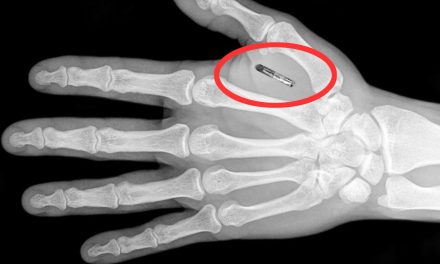Pay close attention, America, because many of your favorite foods may contain bits and pieces of creatures that you presumably didn’t know were there.
Would you like a splash of rodent poop in your coffee, or maggots in your pizza sauce? How about some moldy jelly on your toast? Oh, and take notice, chocolate lovers. That dark, delicious, good for you bar you devoured may contain more rodent hair and more than thirty insect parts.
These dissected creatures are called “food defects,” and their excrement are the bi-product of growing and harvesting food. The US Food and Drug Administration says:
“It is economically impractical to grow, harvest, or process raw products that are totally free of non-hazardous, naturally occurring, unavoidable defects.”1
So while there’s no way to eliminate of all the creatures that might find themselves in the food processing chain, the FDA has established criteria to keep food defects to a minimum.
RELATED STORY:
A report in CNN breaks down a typical day of meals to see what else you’re not aware that you’re eating:
Breakfast
The coffee beans you grind for breakfast are allowed by the FDA to have an average of 10 milligrams or more animal poop per pound. As much as 4% to 6% of beans by count are also allowed to be insect-infested or moldy.
As you sprinkle black pepper on your morning eggs, try not to think about the fact you may be eating more than 40 insect fragments with every teaspoon, along with a smidgen of rodent hair.
Did you have fruit for breakfast? Common fruit flies can catch a ride anywhere from field to harvest to grocery store, getting trapped by processors or freezing in refrigerated delivery trucks and ending up in your home.1
Lunch
Let’s say you packed peanut butter and jelly sandwiches for everyone’s lunch. Good choice!
Peanut butter is one of the most controlled foods in the FDA list; an average of one or more rodent hairs and 30 (or so) insect fragments are allowed for every 100 grams, which is 3.5 ounces.
The typical serving size for peanut butter is 2 tablespoons (unless you slather). That means each 2 tablespoon-peanut butter sandwich would only have about eight insect fragments and a teensy tiny bit of rodent filth. (“Filth” is what the FDA calls these insect and rodent food defects.)
Unfortunately, jelly and jam are not as controlled. Apple butter can contain an average of four or more rodent hairs for every 3.5 ounces (100 grams) and about five whole insects. Oh, and that isn’t counting the unknown numbers of teensy mites, aphids, and thrips.
Apple butter can also contain up to 12% mold, which is better than cherry jam, which can be 30% moldy, or black currant jam, which can be 75% moldy.1
RELATED STORY:
Snacks
Did you pack some of the kid-sized boxes of raisins for your child’s mid-afternoon snack?
Golden raisins are allowed to contain 35 fruit fly eggs as well as 10 or more whole insects (or their equivalent heads and legs) for every 8 ounces. Kid-sized containers of raisins are an ounce each. That’s more than 4 eggs and a whole insect in each box.1
After work drink
Any Bloody Mary fans? The tomato juice in that 14 oz. Bloody Mary could contain up to four maggots and 20 or more fruit fly eggs.
And if you’re having a fruity cocktail, just be aware that the canned citrus juices that many bars use can legally have five or more fruit fly eggs or other fly eggs per cup (250 ml). Or that cup of juice could contain one or more maggots. Apricot, peach and pear nectars are allowed to contain up to 12% moldy fruit.1
Dinner
Oh, gosh, the possibilities are endless! Did you know there can be 450 insect parts and nine rodent hairs in every 16 oz. box of spaghetti?
Canned tomatoes, tomato paste and sauces like pizza sauce are a bit less contaminated than the tomato juice in your cocktail. The FDA only allows about two maggots in a 16 oz. can.
Adding mushrooms to your spaghetti sauce or pizza? For every 4 oz. can of mushrooms there can be an average of 20 or more maggots of any size.
The canned sweet corn we love is allowed to have two or more larvae of the corn ear worm, along with larvae fragments and the skins the worms discard as they grow.
For every ¼ cup of cornmeal, the FDA allows an average of one or more whole insects, two or more rodent hairs and 50 or more insect fragments, or one or more fragments of rodent dung.
Asparagus can contain 40 or more scary-looking but teensy thrips for every ¼ pound. If those aren’t around, FDA inspectors look for beetle eggs, entire insects or heads and body parts.
Frozen or canned spinach is allowed to have an average of 50 aphids, thrips and mites. If those are missing, the FDA allows larvae of spinach worms or eight whole leaf miner bugs.1
Don’t forget the spices!
Dismembered insects can be found in many of our favorite spices as well. Crushed oregano, for example, can contain 300 or more insect bits and about two rodent hairs for every 10 grams. To put that in context, a family-size bottle of oregano is about 18 oz. or 510 grams.
Paprika can have up to 20% mold, about 75 insect parts and 11 rodent hairs for every 25 grams (just under an ounce). A typical spice jar holds about 2 to 3 oz.1
RELATED STORY:
RELATED STORY:
Food safety process
By now you must be asking: Just how do they count those tiny insect heads and pieces of rodent dung?
Food safety specialist Ben Chapman, a professor in agricultural and human sciences at North Carolina State University said:
“Food manufacturers have quality assurance employees who are constantly taking samples of their packaged, finished product to be sure they’re not putting anything out that is against the rules.”1
Chapman continued, saying sometimes they do it by hand, adding:.
“They take 10 bags out of a week-long production and try to shake out what might be in here. Do we have particularly high insect parts or was it a particularly buggy time of year when the food was harvested? And they make sure they are below those FDA thresholds.”1
If it was a very buggy week and lots of insects end up in the food supply, Chapman said there is no way to get all those eggs, legs and larvae out. Instead, they send the food to a process called “rework.” He explained:
“Say I’ve got a whole bunch of buggy fresh cranberries that I can’t put in a bag and sell. I might send those to a cranberry canning operation where they can boil them and then skim those insect parts off the top and put them into a can.”
“Look, this is all a very, very, very low-risk situation. I look at it as a yuck factor versus a risk factor. Insect parts are gross, but they don’t lead to foodborne illnesses.”1
RELATED STORY:
Chapman points out that the potential for stone, metal, plastic or glass parts to come along with harvested food as it enters the processing system is much more dangerous that some bug parts. All foods are subjected to X-rays and metal detectors, Chapman said, because when those slip through, people can actually be hurt.
Also much more dangerous are foodborne illnesses such as salmonella, listeria, and E. coli, which can severely sicken and even kill. Chapman said:
“Cross-contamination from raw food, undercooking food, hand-washing and spreading germs from raw food, those are the things that contribute to the more than 48 million cases of foodborne illness we have every year in the US.”1
Very interesting, don’t you think? Many countries actually consume bugs on a regular basis as their regular source of protein. We would love to hear your thoughts.












